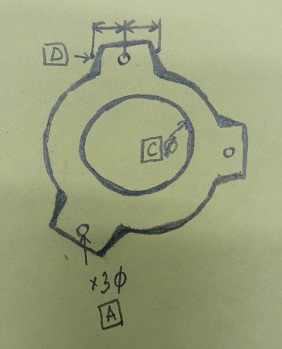As far as I understand, if the reference point is the central circle, then the controlled elements should be controlled only along the PR, but I can not understand how to represent this in Pcdmis.
I hope you can give me some tips for this.
PS
I use 2014 version PCdmis, and xact.
PPS
Datum D what is this??! Dia 100? But it's dat A in my opinion...



